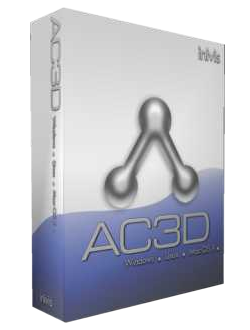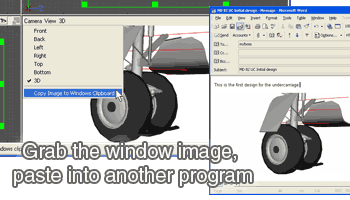
#Ac3d snap to grid plus
Windows/ViewsAC3D has a control panel on the left, plus 4 view windows.

When browsing through the menu items, the function on each item is described in the message text at the bottom of the AC3D window. This feature can be switched off from File->Settings.
#Ac3d snap to grid windows
Small tooltip windows will popup when the mouse pointer rests over a button or field label. Getting helpUser interface components in AC3D have balloon help.

You can drag, resize or rotate this box to adjust the contents A texture coordinate is a two dimensional (u,v) value which defines the point on the 2D image.īounding boxWhen you make a selection of objects, surfaces or vertices, a green box outlines it. Texture coordinatesWhen the vertex of a surface is drawn, a texture coordinate specifies the position of a texture image to map to that point. The images are usually from graphics files such as gif, jpg, bmp etc. TextureGraphical images can be mapped onto the surfaces of an object. MaterialA material defines the color of a surface and also the attributes that define the way it will react to light e.g. In Group, selecting all or part of an object automatically selects the top level object. This allows manipulation of objects, even if they are part of groups. In Surface, operations are performed on one or more selected surface. In Vertex, individual vertices can be selected and adjusted. Select-modeThe select mode allows control over the level of editing in AC3D. Use the Ungroup function to separate the objects. Groups are created by selecting two or more objects and selecting Group from the edit menu or toolbar. GroupA group is a special object that has no surfaces or vertices but has other objects as children. It also has other attributes such as a name and texture.

ObjectAn AC3D object is a list of vertices, and surfaces that use these vertices. A surface is defined as facing the viewer if the vertices can be seen in an anti-clockwise direction. Surface normals are automatically calculated by AC3D. Normals are used in lighting calculations. Surface normalA surface normal specifies the direction a surface is facing. Vertices can be shared between surfaces in the same object. Each vertex referenced in a surface has an associated Texture Coordinate. Surfaces have a material attribute, which defines the color and quality (for lighting purposes). It is more efficient to draw single sided surfaces and makes more sense when used as part of an object such as a sphere (where you cant see the other side of the surfaces). Two-sided surfaces will be visible from both sides. If a surface is set to be single-sided, it will only be visible from the front. The type of a surface defines how the surface is drawn and this can be easily changed. Surfaces are one of three types polygons, lines or polygon outlines. SurfaceA surface in AC3D is a sequence of vertices. A vertex is usually part of one or more Surfaces, but need not be. A vertex is always owned by a single object they cannot be shared between objects. More than one vertex can occupy the same position in 3d space. Its specified by three coordinates x, y and z. It is used to create 3D models for simulations, games, rendering ray-traced images and for scientific and general data visualization.ĪC3D runs on a wide range of standard hardware and is available across a number of popular platforms.ĪC3D terminologyVertexA vertex is a single point in 3d space.

IntroductionWelcome to AC3DAC3D is designed to make the construction of 3D objects fast and easy.
#Ac3d snap to grid manual
Version 6.5 User Manual Copyright Inivis Limited 2009


 0 kommentar(er)
0 kommentar(er)
